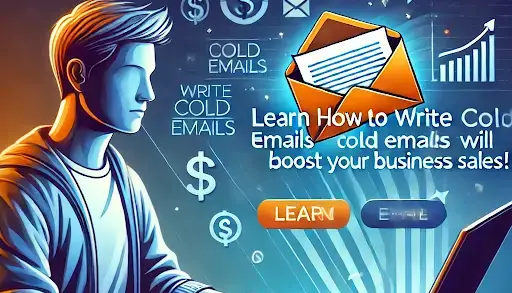Getting Clients Through Cold Emails
“I can provide good service, but will I get clients?”
“How do I contact clients?”
“How can I increase client responses?”
Do these sound familiar? If you’re new to freelancing or business, you might be confused about how to connect with potential clients without spending extra money on ads and still get positive responses. Cold emailing can be a fantastic way to solve these problems. Today, I’ll explain in detail how you can acquire clients through cold emails.
What is Cold Email?
Before diving into strategies, let’s first understand what cold email is. In simple terms, a cold email is an email sent to unknown individuals with a specific purpose.
Why email strangers?
Emailing strangers might seem unusual, but it’s a powerful strategy used by professionals across different industries. Business owners rely on cold emails to generate leads and boost sales. Marketers use them to spread brand awareness and reach potential customers. Freelancers leverage cold emails to showcase their skills, promote their services, and connect with potential clients. Whether you’re looking to grow your business, expand your network, or secure new opportunities, cold emailing is an effective way to make meaningful connections and achieve your goals.
Why Cold Emails are Popular
Cold emails are gaining popularity due to several reasons:
- Client Selection Freedom
Business owners can choose which category of clients they want to work with, enabling them to provide high-quality services. - Build Networking
Cold emailing not only helps in finding preferred clients but also increases networking opportunities. - Cost-Effectiveness
Cold emailing is simple and cost-effective. With just an internet connection and email address, you can start sending emails weekly.
How to Find Clients Through Cold Emails
Step 1: Finding the Right Prospects
A successful cold email campaign relies heavily on finding the right prospects. Prospects are potential future clients, often companies or organizations that match your service offerings.
Avoid Buying Email Lists:
While some might think buying email addresses from B2B lead databases is a quick solution, the data in these databases often becomes outdated quickly. So, investing in them might not yield good results.
Reliable Sources for Finding Prospects:
Here are a few dependable sources to find prospects:
- Startup and company databases like Crunchbase, Product Hunt, AngelList
- SaaS directories like G2 Crowd, Capterra, GetApp
- Niche directories
Step 2: Qualifying Your Prospects
After compiling a list of prospects, the next step is to qualify them—deciding who to include in your campaign and who to exclude.
Criteria for Qualifying Prospects:
- Annual Revenue:
Target companies with an annual revenue of $10 million or more. Use online tools to find this information.
Employee Count:
Companies with 100–200 employees are ideal. Check LinkedIn profiles for accurate employee numbers.
How to Find Email Addresses
Once you’ve identified prospects, find the right person in the company to send your pitch to. Avoid sending emails to general company addresses like info@company.com—these are less likely to be seen.
Tips for Finding Emails:
- Use LinkedIn to find individuals responsible for relevant roles in the company (e.g., content manager for blogging services).
- Many employees list their email addresses on their LinkedIn profiles, making them easy to access.
Tips for Writing a Successful Pitch
A well-written pitch is crucial for getting client responses. Follow these tips to craft the perfect pitch:
- Be Concise:
Include only necessary information to avoid overwhelming the recipient. - Avoid Overly Formal Language:
Use a conversational tone and avoid phrases like “Dear Sir/Madam.” - Show Value:
Focus on how your service or product can solve a problem or add value to their business.
Include a Call to Action (CTA):
End your email with a clear CTA, such as scheduling a call or responding to your email.




